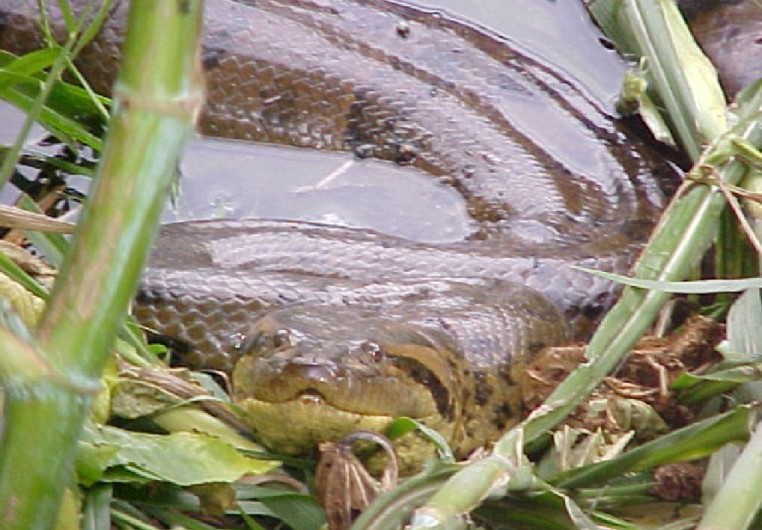Biodiversity
 Green Anaconda
Eunectes murinus | Linnaeus, 1758
Green Anaconda
Eunectes murinus | Linnaeus, 1758

Characteristics: This is one of the largest snakes in the world, and the largest in Brazil, reaching about 10m long. Its color is greenish-gray, it has dark, almost black round spots along its back and sides which are paired with great regularity, and its belly is yellowish-white. Like any constrictor snake, it has a bulky, heavy body. It has aglyphous teeth (no fangs that inoculate venom).
Distribution: This species is found throughout South America (Venezuela, Colombia, Bolivia, Peru, Ecuador, Guyana, French Guiana, and in Brazil, from Amazônia to Paraná). It is found in the basins of the main Brazilian rivers, such as the Paraguay, the Baixo Paraná, including the Pantanal and the Tietê, in low-lying areas, especially on the coast.
Habitat: Open formations, living near rivers, swamps, and lakes, but may also be found on the shores of tropical forests and caves.
Habits: Crepuscular, nocturnal, terrestrial, and aquatic. A solitary species, it attacks both in water and on land, where it moves heavily, but in the water it swims with extraordinary ease and often dives, staying under water for a long time.
Diet: Carnivorous, feeding on fish, reptiles, aquatic birds, and mammals.
Breeding: Viviparous, giving birth to about 50 offspring per brood. Copulation occurs between the female and five to twelve males. During the act, the animals wrap up on each other and form a huge ball of snakes. They reach maturity in six years and can live (and grow) for up to 30 years. Gestation lasts eight months, and the young are born measuring 60cm to 1m in length.
UFRA: Species commonly spotted in Wetlands with Herbaceous Plants and in all large bodies of water.



